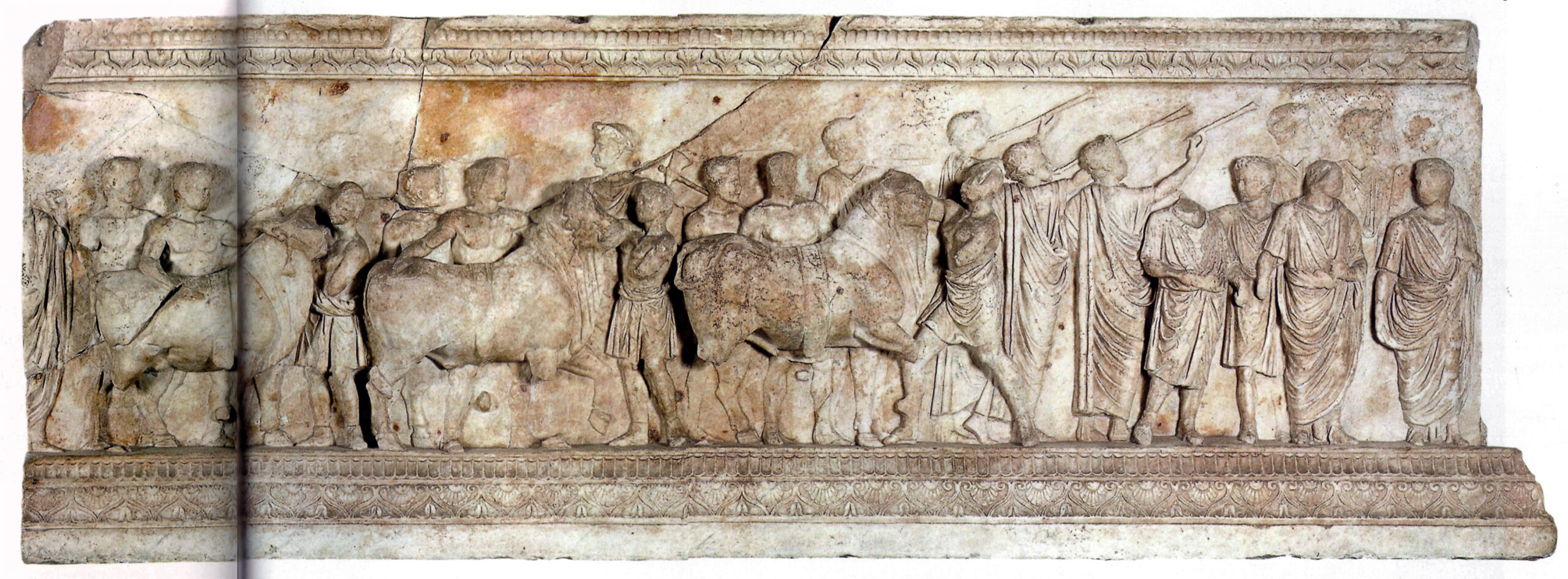Trilingual decree of the priests gathered in Canopus in honour of Ptolemy III Euergetes and Berenice (2nd version)
| TITLE: |
| Trilingual decree of the priests gathered in Canopus in honour of Ptolemy III Euergetes and Berenice (2nd version) |
| DATE: |
| March 7th, 238 BC |
| ACTUAL LOCATION: |
| The Cairo Museum (place of discovery: Memphis, Egypt) |
| LINK: |
| (1) |
| TEXT: |
BERNARD, A. (1992) : La prose sur pierre dans l’Égypte hellénistique et romaine, I. textes et traductions, Paris, pp. 29-35 DITTENBERG, W. (1903): Orientis Graeci Inscriptiones Selectae, Vol. 1, Leipzig, pp. 91-110 HEINEN, H. (2006): “Hunger, Not und Macht: Bemerkungen zur herrschenden Gesellschaft im ptolemäischen Ägypten”, Ancient Society 36, pp. 15-16 (partial edition) HICKS, E. L. (1882): Greek Historical Inscriptions,Oxford, pp. 310-311 (partial edition) LAUTH, Fr. J. (1866): “Entdeckung eines bilinguen Dekretes durch Lepsius”, ZÄS 4, pp. 33-34 (partial edition) MAHAFFY, J. P. (1895): The Empire of the Ptolemies, London,pp. 226-239 MILNE, J. G. (1905): Catalogue général des antiquités égyptiennes du Musée du Caire : Greek inscriptions, Oxford, pp. 5-8 PREISIGKE, F.; F. BILABEL; E. KIESSLING; H.-A. RUPPRECHT (1950): Sammelbuch Griechischer Urkunden aus Ägypten, Band 5, Nr. 7515-8963, Heidelberg, n. 8859 REINISCH, S. L.; E. R. Roesler (1866): Die Zweisprachige Inschrift von Tanis, Wien, pp. 27-53 WERSCHER, C. (1866): “Texte grec de l’inscription de Tanis”, Revue Archéologique 14,pp. 52-55 (partial edition) |
| EDITIONS/TRANSLATIONS: |
| REINISCH, S. L.; E. R. Roesler (1866): Die Zweisprachige Inschrift von Tanis, Wien, pp. 27-53 (in German) PIERRET, P. (1881): Le décret trilingue de Canope, Paris, pp. IX-XVI Wescher, C. (1866): “Texte grec de l’inscription de Tanis”, Revue Archéologique 14,pp. 52-55 (partial translation) BERNARD, A. (1992): La prose sur pierre dans l’Égypte hellénistique et romaine, I. textes et traductions, Paris, pp. 28-34 (translation in French) BRODERSEN, K.; W. Günther; H. H. Schmitt (1999): Historische griechische Inschriften in Übersetzung. III, Der griechische Osetn und Rom (250-1 v.Chr.), Darmstadt, pp. 14-19 (translation in German) PFEIFFER, S. (2004): Das Dekret von Kanopos (238 v. CHR), München, pp. 61-65 (translation in German) HEINEN, H. (2006): “Hunger Not und Macht: Bemerkungen zur herrschenden Gesellschaft im ptolemäischen Ägypten”, Ancient Society 36, pp. 16-17 (partial translation in German) |
| KEYWORDS: |
| Word used to mean procession: |
| περίπλους (ll. 56-57) |
| Word used to mean the cult images: |
| ἄγαλμα (l. 59) |
| Gods or other entities named: |
| Berenice (l. 57) |
| Description of the cult images: |
| The statue is made of gold and adorned with stones (l. 59); with a different tiara from the one on the statue of Berenice’s mother (ll. 61-62); with a scepter in the shape of papyrus (ll. 62-63) |
| Procession’s route: |
| To all the ἐξοδείαι and πανηγύρεις of the other gods (l. 60) |
| Frequency with which the procession takes place: |
| Performers: |
| ὁ προφήτης (l. 59) The priests in charge of dressing the statues (οἱ ἱερεῖς πρὸς τὸν στολισμὸν τῶν θεῶν ll. 59-60) |
| References to the public attending the procession: |
| Rites related to the procession: |
| Allusions to conduct or forms of reverence: |
| The statue is to be honored (τιμᾶται) and worshipped προσκυνῆται) by all under the name of Queen Berenice (l. 61) |
| Other remarkable elements: |
| The priests carry the statue in their arms (l. 60) |
| BIBLIOGRAPHY: |
HEINEN, H. (2006): “Hunger Not und Macht: Bemerkungen zur herrschenden Gesellschaft im ptolemäischen Ägypten”, Ancient Society 36, pp. 13-44 LEGRAS, B. (2004): “La réforme du calendrier sous Ptolémée III: l’avènement d’un « âge d’or » ?”. In: C. Auliard, L. Bodiou, Au jardin des Hespérides: histoire, société et épigraphie des mondes anciens: mélanges offerts à Alain Tranoy, Rennes, pp. 191-206 PFEIFFER, S. (2004): Das Dekret von Kanopos (238 v. CHR), München REINISCH, S. L.; E. R. Roesler (1866): Die Zweisprachige Inschrift von Tanis, Wien, pp. 11-25 |
